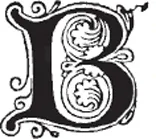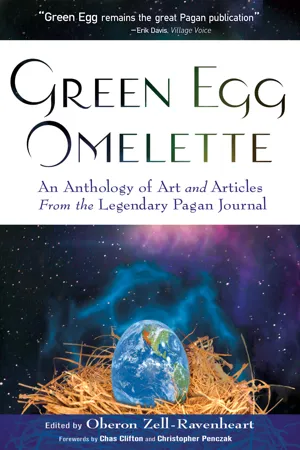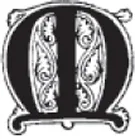

eBook - ePub
Green Egg Omelette
An Anthology of Art and Articles from the Legendary Pagan Journal
- 286 pages
- English
- ePUB (mobile friendly)
- Available on iOS & Android
eBook - ePub
Green Egg Omelette
An Anthology of Art and Articles from the Legendary Pagan Journal
About this book
Selections of poetry, art, letters, and articles from the past forty years, which reflect the history of modern Paganism, are compiled in this richly illustrated anthology that features works from Ralph Metzner, Diana Paxson, Antero Ali, Marion Zimmer Bradley, Robert Anton Wilson, Starhawk, and others.
Frequently asked questions
Yes, you can cancel anytime from the Subscription tab in your account settings on the Perlego website. Your subscription will stay active until the end of your current billing period. Learn how to cancel your subscription.
At the moment all of our mobile-responsive ePub books are available to download via the app. Most of our PDFs are also available to download and we're working on making the final remaining ones downloadable now. Learn more here.
Perlego offers two plans: Essential and Complete
- Essential is ideal for learners and professionals who enjoy exploring a wide range of subjects. Access the Essential Library with 800,000+ trusted titles and best-sellers across business, personal growth, and the humanities. Includes unlimited reading time and Standard Read Aloud voice.
- Complete: Perfect for advanced learners and researchers needing full, unrestricted access. Unlock 1.4M+ books across hundreds of subjects, including academic and specialized titles. The Complete Plan also includes advanced features like Premium Read Aloud and Research Assistant.
We are an online textbook subscription service, where you can get access to an entire online library for less than the price of a single book per month. With over 1 million books across 1000+ topics, we’ve got you covered! Learn more here.
Look out for the read-aloud symbol on your next book to see if you can listen to it. The read-aloud tool reads text aloud for you, highlighting the text as it is being read. You can pause it, speed it up and slow it down. Learn more here.
Yes! You can use the Perlego app on both iOS or Android devices to read anytime, anywhere — even offline. Perfect for commutes or when you’re on the go.
Please note we cannot support devices running on iOS 13 and Android 7 or earlier. Learn more about using the app.
Please note we cannot support devices running on iOS 13 and Android 7 or earlier. Learn more about using the app.
Yes, you can access Green Egg Omelette by Oberon Zell-Ravenheart in PDF and/or ePUB format, as well as other popular books in Theology & Religion & Poetry. We have over one million books available in our catalogue for you to explore.
Information
Chapter 1.
New Pagans
Introduction
by Chas S. Clifton

“Neo-Paganism” sought new ways of thinking about religion.1 It was no longer a case of monotheistic believers versus atheists. As Isaac Bonewits writes in his “Aquarian Manifesto” (he briefly used “Aquarian” almost synonymously with “Neo-Pagan”), “Aquarians—NeoPagan, NeoChristian, Agnostic or of any Faith—are by definition tolerant of ALL Pro-Life Beliefs and Organizations. They do not proclaim the existence of any One-True-Right-And-Only-Way; but rather that every Sentient Being must find her or his own Path.”2 The contrast with the Abrahamic religions could not be stronger.
Tony Kelly, a British Pagan writer, produced an essay called “Pagan Musings,” which was widely reprinted in the Pagan press. It makes the point that our religious innovation and creation started with sheer wonder at the cosmos: “We have walked in the magic forest, bewitched in the old Green Thinks; we have seen the cauldron and the one become many and the many in the one; we know the Silver Maid of the moon-light and the sounds of the cloven feet. We have heard the pipes on the twilight ferns, and we've seen the spells of the Enchantress, and Time be stilled.” Not just wonder, but also sadness permeates this piece, a sadness of shrines neglected, old gods and ways forgotten, joy trampled under repression. And so he promises that days of Pagan wonder can be reclaimed.
As the new American Pagans found each other through Forum letters and advertisements in Green Egg, members of different groups began to see what they had in common as Pagans. The statement “Common Themes of Neo-Pagan Religious Orientation” was a beginning in the process that would produce Professor York's book thirty years later. It includes declarations of ecological wholeness, of an integration of Eros and religion, and an affirmation of the multiplicity of divine forms. This declaration, in effect, makes the point that divinity can appear within the material world, the “tangible [and] sentient,” as York would later write. And it calls for religious freedom to be extended to Pagans too, foreshadowing a struggle for recognition that continues to this day.
The Neo-Pagan Alternative
by Erinna Northwind, Church of All Worlds

1. A combination of willful apathy and real helplessness; lack of control over his institutions. Man cannot focus his attention on the problem or get excited about it. Apathy prevents him from acting individually and from organizing to do what he cannot do individually.
2. Inability to distinguish real values from symbols. Not only real enjoyment and happiness, but health and safety are sacrificed in favor of acquiring symbolic wealth and social status.
3. Profit-motivated proliferation of the use of materials and processes not fully understood, with no assurance of the harmlessness of the given use.
It is well-known that both overcrowding (lack of private space) and sex-repression produce fatigue and depression in the individual, among other ills. Both require the victim to develop a rigid, insensitive outer “shell” as a defense.
He can “shut out the world” by (going into his shell.) A person whose “shell” is sufficiently thick may actually experience reduced sensitivity in his skin, and may interpret pleasurable and painful stimuli conversely.
This shell enables him to shut out painful (or pleasurable—therefore painful) contacts, but it also shuts him in. His perception of reality outside himself is distorted. He cannot experience events normally. He may feel like a spectator in his own experiences.
Denied authentic experiences, he lives in an inner world of abstractions and symbols. His thinking becomes inhuman, machine-like. His aims and actions, while preserving a lunatic logic of their own, become irrational in relation to any normal interpretation of reality; inhumane, and rigidly patterned. He cannot himself test abstractions against reality to determine their relative validity. Hence there are hardly any limits to how far his fantasies can go. He is left suggestible to any appeal that does not attack his basic fears or excite his defense mechanisms.
Thus he can be brainwashed to accept premises any sensible person would dismiss as nonsense, such as: that it is immoral to steal a loaf of bread from a supermarket, virtuous to let one's family starve for want of it, commendably “good business” to misrepresent the weight and the contents of the bread one offers for sale, and one's civic duty to punish the bread-thief. Or, that we are condemned to eternal torment for the sin of coming into existence; that the God who condemns us is all-powerful, yet at the same time is unable to save mankind from hell except by submitting his only son to unspeakable tortures; that we please this God by suffering and self-mutilation, yet must regard him as a loving father. As Tom Paine put it while still a child, any human father that behaved that way would be hanged.
That society in the mass is afflicted with these malaises can be seen in the artificial lifestyle that is accepted as standard. People today live so far removed from direct contact with natural realities that they have only the dimmest ideas of how or where their food is produced, far less any idea of what the surface of their planet is like in the wild state. Many see the sky only through a veil of dirty air.
These causes of human impotence, seemingly a tangle of many strands, are merely different aspects of a single phenomenon: defiance of the elastic and gentle laws (but laws nonetheless, with definite penalties for violation) of Nature.
Man defies Nature by exceeding wise limits on his own numbers, and reproduces the behavior of overcrowded laboratory rats: he turns to sexual perversions (of which chastity is the most bizarre), he fouls his own nest, he kills his Children. He defies Nature by rejecting reality in favor of symbols; by exploiting Nature's mysterious powers without first understanding them, in the arrogant belief that there is nothing he does not know. The most primitive creatures that could be called human knew better than that.
The Church of All Worlds attempts to get at and correct the root causes of Terracide before the crime can be fully accomplished. The tools used include:
1. RELIGION. This is merely saying that there are processes we don't understand yet, and therefore we must not exploit them carelessly. But neither can we afford to ignore their existence, because by doing so we may run afoul of them. Since we do not understand them fully, and perceive them only intuitively, we can best talk about them metaphorically, in the language of myth. There are certain things we must do that bring no immediate concrete gain, yet we must do them for an object “bigger than our individual selves:” the saving of the planet. It is a religious act to use bio-degradable, phosphate-free detergent, which may be more expensive than the polluting kind. By acknowledging the religious nature of these concerns, Neo-Pagans are fighting apathy with a very powerful, very old force: the instinct to worship, which can be, and is in the case of the Church of All Worlds, superstition-free. Certainly a CAW Neo-Pagan is freer from superstition than the “hard-headed businessman,” who values figures on paper above a life richly lived.
2. RETURN TO NATURE. By getting his fingers in the Earth the typical alienated man of today may experience healing of his riven self. Living close to Nature and working in cooperation with Her to produce his necessities and pleasures, daily experiencing the flavors of raw life, must work to reacquaint man with his own nature.
The natural environment is capable of pouring into us masses of subtle information about our own nature and identity and about the universe and our place in it, if we will only approach and be receptive. CAW works to preserve and restore natural wilderness, and to provide opportunities for people to experience contact with Nature and participate in producing their own food, by health-giving organic methods.
Members of the Church of All Worlds are asked to search for the difference between healthy natural desire and neurotic compulsion, and be guided by the former. Thus we serve Nature manifested in ourselves. We are encouraged to turn to Nature as a source of spiritual refreshment and bodily health, so that we can be of more use to ourselves and to our human family.
3. SMALL-VILLAGE LIFE. The Church of All Worlds is working towards establishing new communities to bring institutions down to manageable size. We wish to rely increasingly on the use of village-scale institutions of our own making, which are controllable, and work out solutions to them using our own cognitive apparatus and intelligence. This is in sharp contrast to the method in use today.
People are accustomed to having their personal problems, values, goals and methods selected and defined for them and imprinted on their passive brains by means of the hypnotic tube.
CAW's motto, “Thou art God/dess,” is particularly relevant when we realize that most of humanity's problems come from thinking that someone or something else is God...
Table of contents
- Cover Page
- Copyright
- Title Page
- Foreword by Christopher Penczak
- Acknowledgments
- Table of Contents
- Introduction by Chas S. Clifton
- “Green Egg: The 40-Year-Old Hippie” by Oberon Zell-Ravenheart
- “Keeping the Flame Alive” by Tom Williams
- “Domineditrix” by Diane Darling
- “The 5th Element” by Maerian Morris
- “Bringing Us All Together” by Ariel Monserrat
- 1. New Pagans
- 2. New Witches, Greeks, & Druids
- 3. Old Pagans
- 4. The Gods of Nature; The Nature of Gods
- 5. Nature, Evolution, & Ecospirituality
- 6. Ritual, Celebration, & Worship
- 7. Magick, Arts, & Crafts
- 8. Pagan Culture: Family & Tribe
- 9. Power & Politics: Changing the World
- 10. Gender & Sexuality
- 11. Future Visions
- 12. Pagan Fiction
- Resources: Pagan Publications